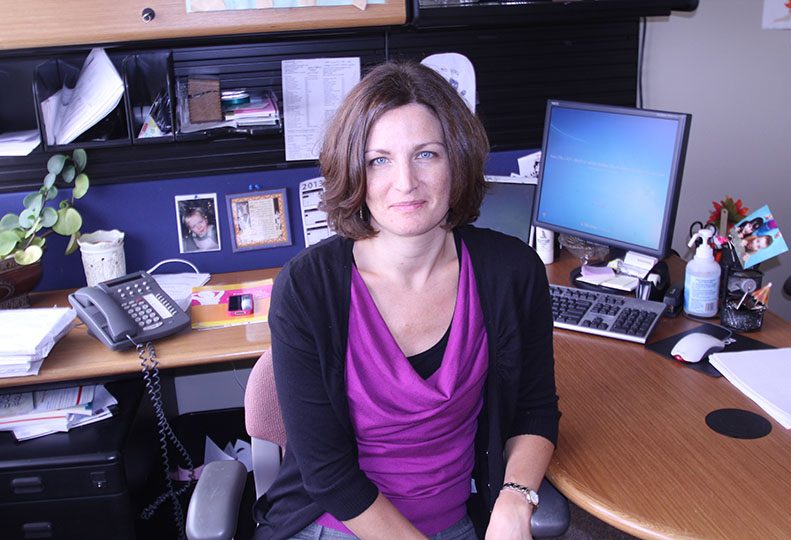
Home » Breast cancer surgeons, plastic surgeons team up
Breast cancer surgeons, plastic surgeons team up
Oncoplasty coordinates removal, reconstruction in one procedure

October 10, 2013
For some breast cancer sufferers, a relatively new procedure that coordinates cancer removal and breast reconstruction has proven to be a viable option.
Dr. Heidi Richardson, a breast surgeon with Rockwood Health System who is a member of the medical staff at Deaconess Hospital, says the procedure, called oncoplasty, has become a preferred option for cancer sufferers whose disease has progressed to where a mastectomy, or full removal of a cancerous breast, is the best treatment option.
The overarching goal of the procedure is to minimize any negative emotional effects that can come with breast removal for patients who already are going through the life-altering event of learning they have breast cancer and then having it treated.
The procedure has a number of nuances, Richardson says, adding that from patient to patient, "It's never the same."
Oncoplastic surgery involves a breast surgeon working in concert with a plastic surgeon, and often with a medical oncologist and radiation oncologist as well. Richardson says Rockwood recently dissolved its plastic surgery practice, and since then, she has been working on such procedures more regularly with Dr. Emily Williams, of Plastic Surgery Northwest.
One goal of oncoplastic surgery often is to preserve a patient's nipple-areola complex, Richardson says. To do so, a surgeon removes the bulk of a breast while keeping much of a patient's skin attached. Once a mastectomy is complete, a plastic surgeon then can reconstruct the breast, as part of the same procedure, using the original nipple and areola.
Otherwise, a plastic surgeon must reconstruct a nipple using skin from another part of the body.
"It looks good," Richardson says, "but not as good as the original nipple-areola complex."
To perform such a procedure, she says, a patient's tumor or tumors must not be near her nipple. Otherwise, she says, it can't be spared.
A plastic surgeon also can lift and reshape a patient's healthy breast so it is symmetrical with the reconstructed one during an oncoplastic procedure, she says.
Richardson says she performs the more involved surgeries as often as a few times each week, and those operations can take up to 10 to 12 hours to perform.
Richardson says she never performs plastic surgery herself. However, there is one procedure she performs independent of a plastic surgery that could be considered oncoplasty. During a lumpectomy, which involves removal of a tumor and surrounding tissue rather than the entire breast, Richardson says she can make a cosmetically appealing incision in a location that might not be as noticeable. Once the tumor is extracted, she says she takes healthy tissue from elsewhere on a patient's body and fills in the depression left from surgery.
After a mastectomy, radiation often isn't needed, Richardson says. In cases where it is necessary, such as when a patient has had multiple tumors, radiation can be targeted to the proper area and performed after a breast reconstruction.
"We used to think we couldn't radiate implants," she says. "We know we can now."
While oncoplasty is a viable option for women who need mastectomies, such procedures aren't necessary if the disease is caught early on, Richardson says. Mastectomies typically are necessary only when the cancer has progressed and a tumor has grown large—generally 5 centimeters in diameter or larger—or if there are multiple tumors.
According to statistics from the Susan G. Komen for the Cure organization, which is a nonprofit that raises money for breast cancer research and promotes awareness of the disease, breast cancer is the most common type of cancer, and about 1.3 million people worldwide are diagnosed with it annually.
Richardson says the disease can affect men as well as women, but breast cancer cases in men are rare. In the past five years, she says, she has had three male patients with breast cancer. Even that low rate is higher than one would expect to see, she says.
Latest News Up Close Health Care
Related Articles




